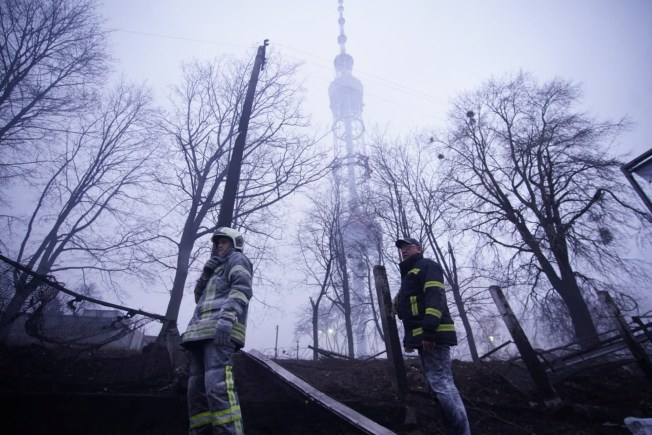Local and international journalists in Ukraine are risking their lives to report the news as Russia’s invasion continues. Russian forces have shelled a TV broadcast tower in Kyiv, in an attack that killed five people including journalist Yevhenii Sakun. Journalists are considered civilians, and the bombing may constitute a violation of international humanitarian law.
Separately, two journalists with the Danish newspaper Ekstra Bladet were shot while reporting in eastern Ukraine, and one Spanish journalist covering Ukrainian refugee movements was detained in Poland.
In Russia, authorities have threatened and detained journalists covering the invasion and anti-war protests; at least five journalists are facing charges over their coverage of those protests.
Russia’s state media regulator, Roskomnadzor, also took independent broadcasters Echo of Moscow and Dozhd TV off the air and blocked access to their websites over their reporting on the conflict.
- CPJ Exclusive: Afghanistan’s intelligence agency emerges as new threat to independent media
- Haitian police kill one journalist, injure two others at protest
- Indian authorities continue to arrest journalists to suppress critical reporting
- Peruvian journalist Gastón Medina receives death threat
- Prominent blogger Seved Hossein Ronaghi Maleki arrested in Iran
- CPJ Q&A: How did Bangladeshi writer Mushtaq Ahmed die in jail? His lawyer spoke to CPJ about his effort to find answers
- Armed men attack car, bodyguard of investigative Colombian journalist Julián Martínez
- South Sudanese security forces threaten and briefly detain eight journalists
- CPJ joins call for human rights protections in EU Digital Services Act
Filipino journalist Gerardo Ortega was killed more than a decade ago. Substantial flaws have been found in the legal procedures around his case, and the alleged mastermind of the murder, a local politician, still exerts considerable influence over local authorities. Key witnesses in the case have been endangered or silenced. As a result, justice remains elusive, sending a frightening message that journalists covering politics and corruption can be silenced with impunity.
The findings are part of a new investigation published by A Safer World For The Truth, a joint project between CPJ, Free Press Unlimited, and Reporters Without Borders. Read the full report here, and explore other investigations into cases of journalists killed in the Central African Republic, Mexico, and Pakistan.
- BBC Ukraine editor: There is no safe place any more — Marta Shokalo, BBC
- China’s propaganda over Ukraine is shifting and uncertain — Tracy Wen Liu, Foreign Policy
- How Russia’s Nobel-winning newspaper is covering Ukraine – David Remnick, The New Yorker
- India’s press crackdown: The silencing of journalists in Kashmir — Suchitra Vijayan, The Nation
